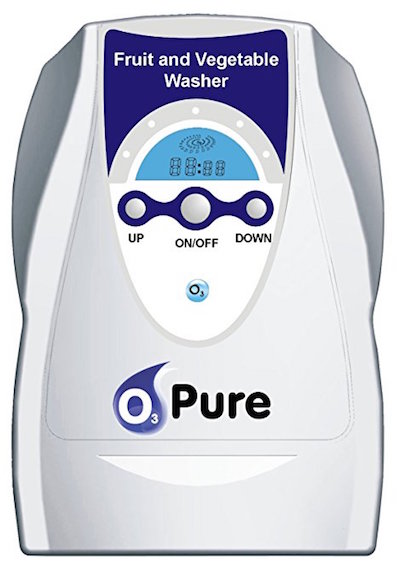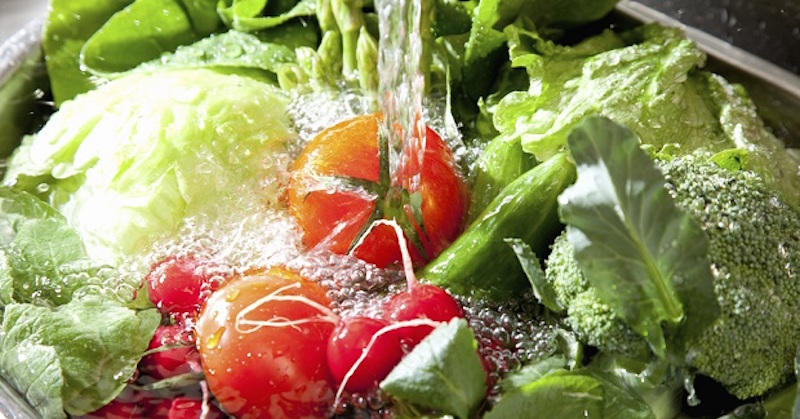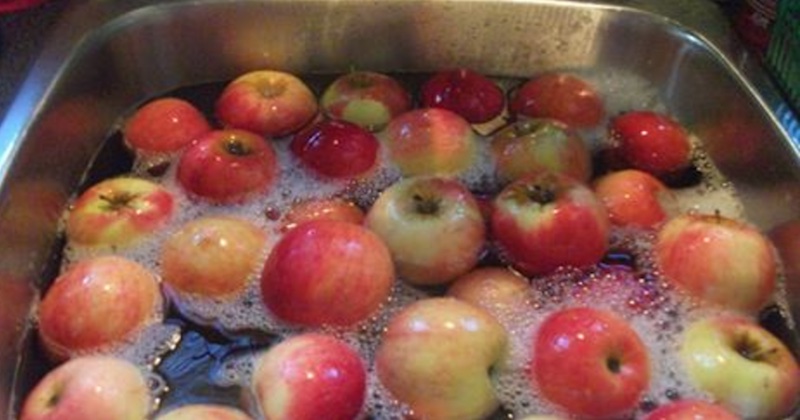How To Safely And Properly Remove Toxic Pesticides From Your Fruits And Vegetables
Last updated on
After a long day at work, the extra step of washing your produce before dinner may simply seem like too much. Maybe you wash your veggies sometimes, or perhaps washing has become a forgotten part of your dinner routine.
The question remains: Is it really that important to wash your produce right away? Although this may add a few minutes to the task of preparing a meal, the answer is YES!
Why You Must Wash Your Vegetables
Though fruits and vegetables should be at the core of your diet, they do come with their risks, just like any other type of food. By the time it hits your kitchen, produce may be infected by bacteria, soaked in pesticides, or have a thin layer of dirt on its surface. Micro-organisms that you cannot see with your naked eyes. For all of these reasons, washing vegetables is absolutely essential.
Food-borne illness is often seen as harmless, simply causing a bit of nausea and perhaps vomiting or diarrhea. Food-borne illnesses can be very dangerous, though, especially for at-risk populations like elderly adults and very young children. You can significantly cut down your risk by washing your produce.
Organic vs. Conventional Produce
You may already know that buying organic produce is a great way to minimize your exposure to pesticides, antibiotics, and other unwelcome food additives. However, even if you buy organic food, you should still wash your produce.
Keep in mind that it is even more crucial to wash your produce if you eat conventional fruits and vegetables. This type of produce is often liberally sprayed with pesticides to keep bugs off and weeds out.
These pesticides seep into fibers of the food, and make their way into your body. You can’t totally eliminate pesticides by washing your produce, so organic is still the best way to go, but you can get rid of some surface-level pesticides with a good wash.
Washing Before Juicing
If you juice, you may be wondering how many chemicals and pesticides you’re getting with every glass of juice. Using the right juicer can have a huge impact on the chemical residue found in your produce.
A gear juicer is far superior to a centrifugal juicer for this purpose. While a centrifugal juicer cuts up your produce and breaks up chemical molecules that get included in your juice, a gear juicer presses the produce without disturbing the chemical molecules in the fiber, thus reducing the toxins in your extracted juice.
With a centrifugal juicer, the broken down chemicals are still present in your juice. With a gear juicer, the unwelcome chemicals stay in the pulp.
Research backs this up. A juicer analysis looked at the concentration of different chemicals in the juice and pulp of produce that went through a gear juicer. In all four areas, the majority of the chemical residue stayed in the pulp.
Read more about how a gear juicer can minimize pesticides and chemicals inclusion in your juice.
How To Properly Remove Pesticides From Your Vegetables
I usually get asked if you should wash your vegetables before storing them away, or wash them just before you juice. It really depends on you.
If you want to wash your vegetables before storing them away in order to save preparation time when you’re ready to juice, then be sure to dry your vegetables completely before putting them away. Putting your vegetables away while they’re still wet (especially leafy ones) will cause them to rot faster.
I usually buy enough produce for one time juicing, store them in the fridge and prepare them when I’m ready to juice. Each time I juice, I may spend about 1-2 hours for the entire process of soaking, washing, cutting and juicing. This way I actually save one step of having to dry them and storage packaging.
Following the proper steps is key to washing your produce. This process walks you through it:
- Run the produce you want to use under running lukewarm or cold water to remove excess dirt and soil. Do this a couple of times if necessary.
- Gently massage the produce to get out any stubborn dirt.
- Fill up a clean sink or a large bucket with just enough water to cover your produce. Add in about ¼ cup of white vinegar for about ½ sink of water, and a ½ teaspoon of seasalt and leave the produce to soak for about 5-10 minutes. You may also use organic vegetable liquid soap if you can find that at your local health foodstore. Or buy a safe veggie wash here.
- For washing small fruits like berries and grapes, soak for no more than 5 minutes.
- When you come back later, you may see that the the water is dirty and may smell. That was the pesticide residue that was hiding in your produce. Discard this water and rinse your produce once or twice more.
- Soak your produce once more with a few slices of onions or lemons, for another 5 minutes. This step is optional but if you want to be really safe, do it.
- Final rinse and your produce is now ready to use.
Although this way of washing may not completely remove all the pesticides, but it removes as much as 80% of them toxins. Taking your time to prepare and wash your food properly has enormous health benefits for you and your family. Simple efforts like this will help bring you closer to achieving your goal for optimal health and lowering your risks for diseases.
Using An Ozonizer For Fruits And Vegetables

Ozone can kill 99% of pathogens (harmful microbes) within 10 seconds! Read more here.
Here’s a little science to explain an ozonizer: Ozone is made up of the same oxygen that we breathe. The only difference between the two is that ozone is made up of three oxygen atoms, while the oxygen that we breathe is made up of only two atoms.
Ozone, due to the third oxygen atom, is naturally unstable. This means that it always wants to get rid of that extra atom. Therefore, when O3 comes in contact with any cell, the third atoms will be transferred over. When this reaction happens, O3 transforms back into O2 but, its conventional properties develop more powerful and more energized nature.
A food ozonizer can kill pathogens almost instantly, remove foul pesticides odor, restore food flavor and taste, preserve freshness and extend food life.
Some of the links I post on this site are affiliate links. If you go through them to make a purchase, I will earn a small commission (at no additional cost to you). However, note that I’m recommending these products because of their quality and that I have good experience using them, not because of the commission to be made.



































 JOIN OVER
JOIN OVER
Comments